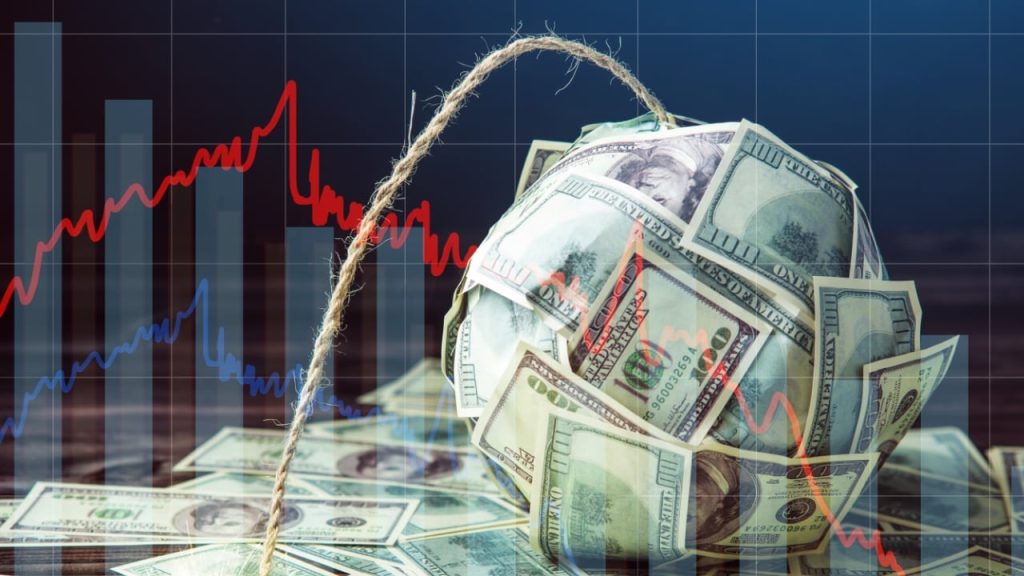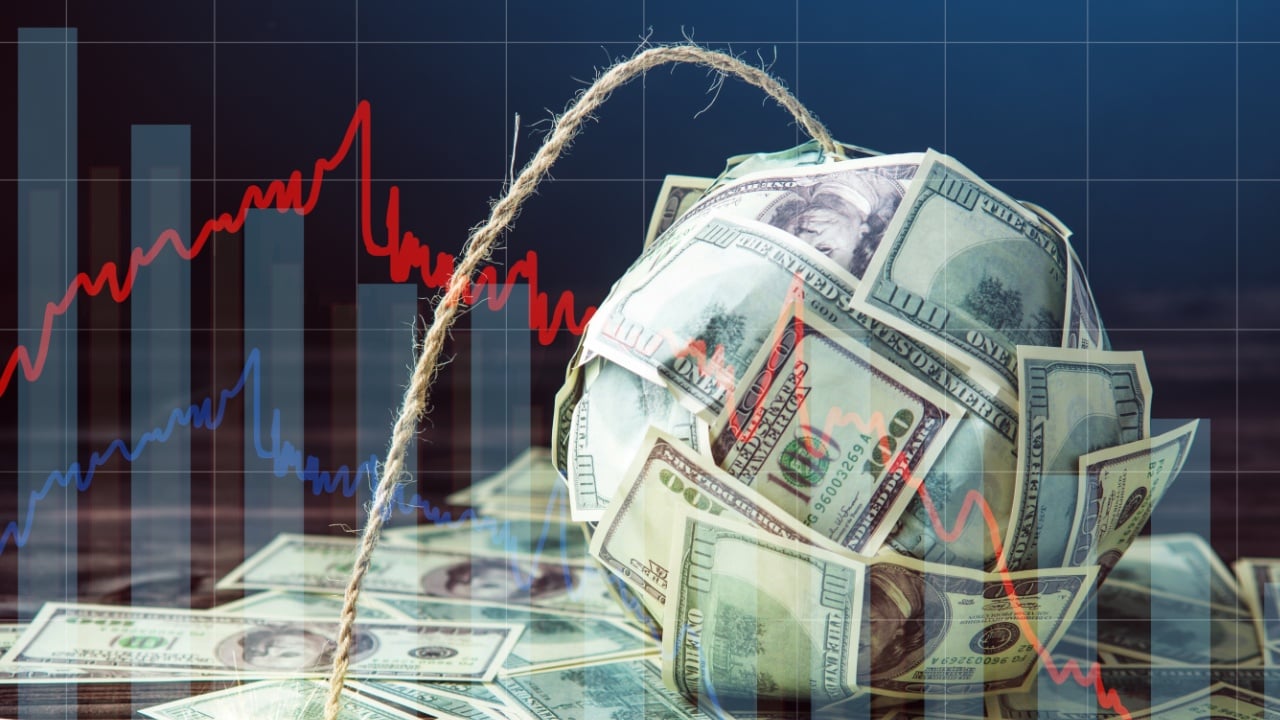
The Fed’s Gordian Knot: A Systemic Crisis Beyond Leadership
The Federal Reserve, a linchpin of the U.S. financial system, has long been a focal point of economic and political discourse. The institution’s immense power and influence over monetary policy, interest rates, and financial stability make it a critical yet contentious entity. At the heart of this debate lies the question of leadership, particularly the role of its chair, currently held by Jerome Powell. However, a growing consensus, championed by figures like former Congressman Ron Paul, asserts that replacing Powell is akin to applying a Band-Aid on a broken system. The underlying issues are deeply systemic, rooted in the Fed’s structure, mandate, and historical actions, far beyond the capabilities of any single individual to rectify.
The Weight of History: A Legacy of Economic Missteps
The Federal Reserve’s history is marked by significant missteps that have left lasting scars on the economy. Critics argue that these past errors continue to shape the Fed’s current policies, creating a cycle of flawed decision-making. For instance, the Fed’s response to the 2008 financial crisis, while necessary at the time, led to unprecedented monetary expansion and low-interest-rate policies that some believe have distorted market signals and encouraged excessive risk-taking. These policies have contributed to the current economic landscape, where debt levels are unsustainable, and financial stability is precarious. Any new Fed chair will inherit this complex legacy, making it challenging to implement meaningful change without addressing the root causes of these historical mistakes.
The Debt Conundrum: A $37 Trillion Burden
One of the most pressing challenges facing the Fed is the staggering $37 trillion federal debt. This debt burden represents a significant threat to economic stability and growth. The Fed’s role in managing this debt is fraught with controversy. Critics argue that the Fed’s low-interest-rate policies, designed to stimulate economic growth, have inadvertently encouraged excessive government borrowing and spending. This cycle of increased debt has led to a situation where the national debt is growing at an unsustainable pace, eroding the value of the dollar and undermining long-term economic prospects. A new Fed chair will face the daunting task of balancing the need to control inflation with the imperative to prevent a debt crisis, a delicate act that requires both economic acumen and political courage.
The Illusion of Control: Central Planning and Market Distortions
A central critique of the Fed, particularly from libertarian economists like Ron Paul, is the inherent impossibility of effectively managing interest rates through central planning. The argument posits that no individual or group can possess the knowledge and foresight necessary to determine the “correct” interest rates for an entire economy. The Fed’s attempts to control interest rates are seen as a form of central planning that leads to market distortions and unintended consequences. These interventions create artificial booms and busts, ultimately undermining the stability of the financial system. By manipulating market signals, the Fed distorts price mechanisms and prevents the efficient allocation of resources, leading to long-term economic imbalances.
Political Pressures: The Fed’s Tightrope Walk
The Federal Reserve operates within a highly politicized environment, constantly facing pressure from both the executive and legislative branches of government. This political interference can compromise the Fed’s independence and objectivity, leading to decisions that are motivated by short-term political considerations rather than sound economic principles. A new Fed chair will inevitably be caught in this political crossfire, facing the challenge of maintaining the Fed’s independence while also responding to the demands of elected officials. This tightrope walk requires a delicate balance of political savvy and economic expertise, a task that is increasingly difficult in today’s polarized political climate.
The Monetization Maze: Printing Money and Inflationary Pressures
Another critical issue is the Fed’s practice of debt monetization, essentially printing money to finance government spending. Critics argue that this practice erodes the value of the dollar and leads to inflation. While the Fed maintains that these policies are necessary to stimulate the economy and prevent deflation, skeptics contend that they ultimately debase the currency and harm savers and those on fixed incomes. The long-term consequences of debt monetization are a major concern, as they can lead to a loss of confidence in the dollar and potentially trigger a currency crisis. Any new Fed chair will need to address these concerns while balancing the need for economic growth with the imperative to maintain the dollar’s stability.
Beyond Powell: The Need for Systemic Reform
The prevailing argument suggests that the issues facing the Fed are far more fundamental than individual leadership. The problems are systemic, rooted in the very structure and mandate of the central bank. Critics argue that the Fed’s dual mandate of maintaining price stability and promoting full employment is inherently flawed, as it often leads to conflicting priorities and policy decisions that prioritize short-term gains over long-term stability. Addressing these systemic issues requires a comprehensive overhaul of the Fed’s structure and mandate, a task that goes beyond the scope of any single individual’s leadership.
The Siren Song of Inflation: An Unsustainable Pressure
The Fed’s focus on stimulating employment can lead to inflationary pressures, particularly when combined with expansionary fiscal policies. The current economic climate is characterized by rising inflation, and any new Fed chair will face the daunting task of bringing inflation under control without triggering a recession. This requires a delicate balancing act and a willingness to make politically unpopular decisions. The challenge is compounded by the fact that the Fed’s tools for controlling inflation, such as raising interest rates, can have significant negative impacts on economic growth and employment. Finding the right balance between these competing priorities is a critical challenge for any future Fed leadership.
The Untouchable Authority: Challenging the Fed’s Influence
The Federal Reserve wields immense influence over the economy, and its decisions can have profound consequences for businesses, consumers, and investors. Critics argue that the Fed’s power is too concentrated and that it operates with insufficient transparency and accountability. This “untouchable authority,” as some describe it, makes it difficult to challenge the Fed’s policies or hold it accountable for its mistakes. Reforming the Fed’s governance structure and increasing its transparency are seen as essential steps towards restoring public trust and ensuring that the central bank operates in the best interests of the American people. Without such reforms, the Fed’s decisions will continue to be met with skepticism and distrust.
A False Dawn: Why New Nominees May Not Be the Answer
Even potential nominees floated as replacements for Powell are viewed with skepticism by those advocating for fundamental reform. The concern is that these individuals, while perhaps possessing different perspectives or approaches, would still be operating within the same flawed system. Therefore, their ability to enact meaningful change would be limited. Critics argue that any meaningful reform must address the systemic issues within the Fed’s structure and mandate, rather than relying on the leadership of a single individual. Without such reforms, the Fed will continue to face the same challenges and criticisms, regardless of who sits in the chair.
The Real Culprit: Spending Addiction, Not Monetary Policy
Some argue that the primary problem isn’t the Fed’s monetary policy but rather the federal government’s “spending addiction.” They contend that excessive government spending is the root cause of the debt problem and that the Fed is merely trying to accommodate this fiscal irresponsibility. Addressing the debt crisis requires a fundamental shift in fiscal policy, with a focus on reducing government spending and balancing the budget. Without such a shift, any attempt to reform the Fed will be ultimately futile. The Fed’s policies are, to a large extent, a response to the government’s fiscal policies, and addressing the root cause of the debt problem is essential for ensuring long-term economic stability.
The Irony of Independence: Can the Fed Truly Be Free?
The concept of an independent central bank is often touted as a safeguard against political interference in monetary policy. However, critics argue that the Fed is not truly independent, as it is ultimately accountable to Congress and subject to political pressure. The Fed’s independence is further compromised by its close ties to the banking industry, which some argue gives it a vested interest in maintaining the status quo. Achieving true independence for the Fed would require a fundamental restructuring of its governance and a commitment to transparency and accountability. Without such reforms, the Fed’s decisions will continue to be influenced by political and industry interests, rather than sound economic principles.
A Different Path: Market Rates and Limited Government
The solution, according to Ron Paul and others, lies in getting the government out of the business of managing the economy and allowing market forces to determine interest rates. This approach, they argue, would lead to a more stable and prosperous economy, free from the distortions and unintended consequences of central planning. The core belief is that markets are more efficient at allocating resources and setting prices than any central authority. By allowing market forces to operate freely, the economy would be more resilient and better equipped to handle economic shocks and crises. This approach requires a fundamental shift in economic philosophy, moving away from central planning and towards a more market-driven system.
End The Fed? A Radical Proposition, A Necessary Debate
While the idea of abolishing the Federal Reserve may seem radical, it represents a growing sentiment that the current system is fundamentally broken and in need of drastic reform. Even if the Fed is not entirely abolished, the debate over its role and function is essential for ensuring a sound and sustainable economy. The Fed’s policies have significant impacts on the lives of everyday Americans, and ensuring that these policies are transparent, accountable, and in the best interests of the public is a critical task. The debate over the Fed’s future is not just about economic policy; it is about the fundamental principles that underpin the American economy and the role of government in managing it.
The Unfolding Drama: Waiting for Change
While some speculated about potential replacements for Powell being announced “very soon,” the reality is often more complex. The future of the Fed and its leadership remains uncertain, but the underlying issues will continue to demand attention, regardless of who sits in the chair. The challenges facing the Fed are deeply rooted and will require a comprehensive and sustained effort to address. The debate over the Fed’s future is far from over, and the decisions made in the coming years will have significant implications for the American economy and its people.
A System in Need of Overhaul
Ultimately, the debate surrounding the Fed and its leadership highlights a fundamental tension between different economic philosophies. On one side are those who believe in active government intervention to stabilize the economy and promote full employment. On the other are those who advocate for limited government and free markets, arguing that the Fed’s interventions ultimately do more harm than good. Regardless of one’s position, it is clear that the Federal Reserve faces significant challenges and that simply replacing the chair will not solve the deep-rooted problems plaguing the system. A more comprehensive and fundamental reform is needed to ensure a sound and sustainable economic future for the United States. This reform must address the systemic issues within the Fed’s structure and mandate, as well as the broader economic policies that shape the American economy. Only through such a comprehensive approach can the Fed be transformed into an institution that truly serves the interests of the American people.





